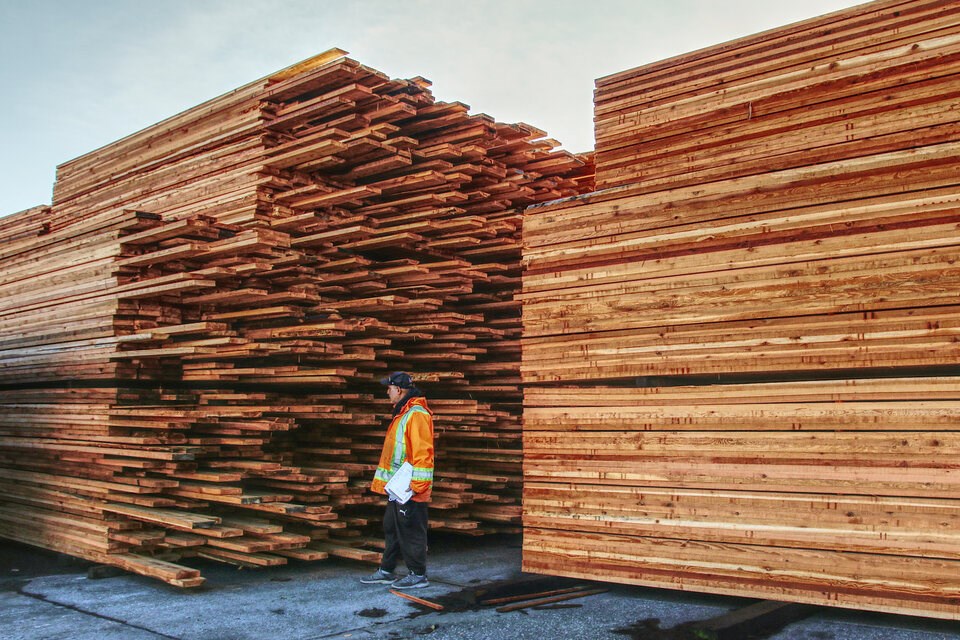 Jun 9 2020
Jun 9 2020Scientists conclude B.C.’s count of old-growth forest greatly overestimated
Vancouver Sun
June 9, 2020
An independent report by a trio of scientists warns that the tiny amount of old-growth forest remaining in B.C. is in peril if the province doesn’t implement sweeping policies to protect it.
The report, released last month by Karen Price, Rachel Holt and Dave Daust, was done to aide the province’s Old Growth Strategic Review, a two-person expert panel expected to provide its own report soon. The scientists volunteered their time to inform the panel and submitted their own findings over the past six months.
The scientists found that the province’s count of 13.2 million hectares of old forest — about 23 per cent of forested areas in the province — is accurate but does not tell the whole story.
“We believe that (number) to be a misleading and unhelpful piece of information, so we looked at that in more detail,” said Holt, who owns Veridian Ecological Consulting and has been a contractor for First Nations, industry and the province over the past two decades.
Of the 13.2 million hectares of old-growth forest in B.C., about 80 per cent is home to small trees and only three per cent supports the large trees British Columbians picture when they are thinking about old-growth, the scientists found.
“We need to have representation of all these different ecosystem types — including the ones that have big trees — and we don’t have that in our protection,” Holt said.
The scientists said they found that more than 85 per cent of productive forest sites have less than 30 per cent of the amount of old-growth that would be expected naturally. Of those, half have less than one per cent of expected old-growth.
“This current status puts biodiversity, ecological integrity and resilience at high risk today,” they said in their report.
The scientists recommend three key actions, starting with government immediately stopping the harvesting of the “rarest of the rare” trees.
This would mean retaining all old forest in any ecosystem that has less than 10 per cent of old trees remaining, focusing on retaining higher-productivity sites and the irreplaceable older and ancient forests, and retaining productive, mature stands — smaller management units of trees used for forestry — where there is little or no old-growth left.
They recommend government develop and implement “ecologically defensible” targets for the protection of old forest, protecting at least 30 per cent of each naturally occurring ecosystem.
And they recommend government improves how it implements policy, such as closing loopholes used by the forest industry, to ensure old-forest retention protects the last remaining productive old forest, and provides functional forests for years to come.
“Without immediate action, we will lose these globally priceless values — and still have to deal with a volume-based industry that has not planned ahead for transition,” the scientists wrote.
“The provincial government must provide funding, commitment and management authority to ensure that staff can implement effective forest conservation. Little human effort is tasked with protecting old-forest values, while much is focused on harvesting.”
Minister Doug Donaldson said in an email that his ministry is aware of the report.
“Building a consensus on managing old-growth forests has been a challenge for more than 30 years, this includes trying to get all parties to agree on what is and is not old-growth and how old-growth areas are measured,” said Donaldson, who is minister of forests, lands, natural resource operations and rural development.
He said the problem is “many years in the making” and won’t be solved immediately, which his why his ministry launched a review and engagement process. Donaldson said the solution will require more work with environmental organizations, First Nations, industry and other groups.
“We’re all excited by the buzz this is creating inside and outside government,” said the independent report’s lead author, Karen Price. “We hope that our work will support the minister in his attempts to build policy focused on resilience.”
The full report is available at veridianecological.ca.
Read the original article






